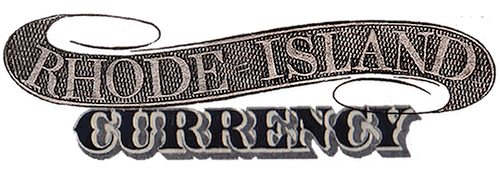Liberty Bank $50
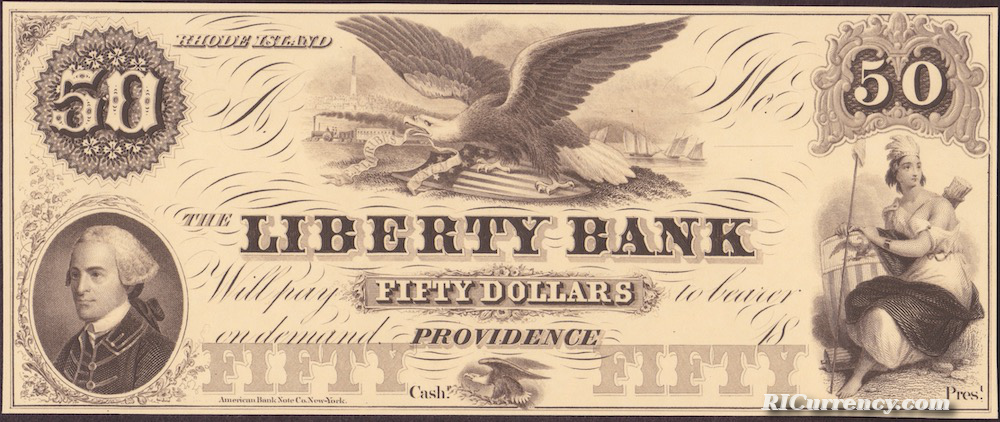
20th-Century Proprietary Proof From the American Banknote Co. Archives
Notes like these can cause a bit of confusion. Are they one-of-a-kind printer’s proofs, made 160 years ago and worth in the hundreds or thousands of dollars? Or could they be recent novelties, released in large batches a few decades back and now sold on eBay for $10 apiece?
For this $50 bill, the story lies somewhere in between.
The original version of this obsolete banknote dates from 1850 to 1857. It was first engraved for Providence’s Liberty Bank by Toppan, Carpenter, Casilear & Co. and is cataloged as Durand 1458, Haxby RI-325 G12, Bowers W-RI-1010-050-G060.
After Toppan merged with others to become the American Bank Note Company in 1858, the TCC imprint was replaced with one from the ABNCo. This second version is unlisted in Durand and Haxby, but cataloged by Bowers as W-RI-1010-050-G060a.
However, this is not an original note.
It may look old, but upon closer inspection it’s clear that it wasn’t toned through aging. Rather, the bill was printed on thin beige card in dark brown, which would be unusual for early samples kept by printing companies for their own archives.
Another indication that this is a more recent product is that the fine lines of the design lack the definition of notes known to be genuine, 19th-century proofs. For example, compare this note’s eagle with one from an 1850s $1 proof engraved by Toppan, Carpenter, & Co. for Providence’s National Bank (it has a different background surrounding the eagle).
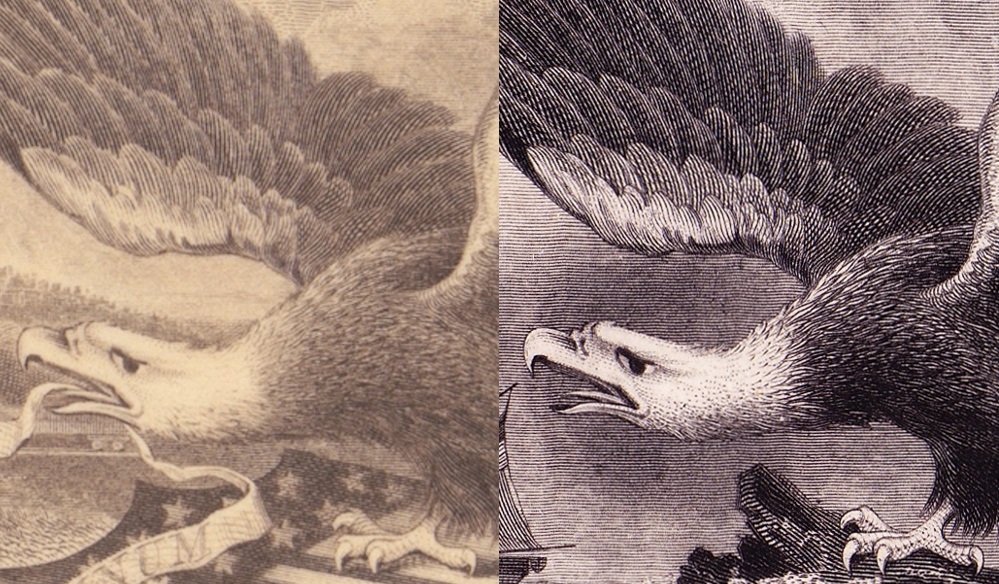
Detail of the eagle on the Liberty Bank $50, showing a murkier design and less vibrant black ink (left) when compared to a similar engraving on a genuine 1850s proof (right).
In this detail, the beak and claw are far less sharp on the left. The feathers look muddy. The contrast on the neck appears less dramatic than on the 19th-century proof on the right. These differences occurred because the vignette on the left was printed directly onto the harder surface of a card, which allows for less of the design to be transferred. On the right, soft India paper was used, which absorbed the clean, sharp lines in a far superior manner.
And then there’s the reddish “Property of American Banknote Co.” stamp on the back. Experts have traced the redder shade (and not purple) of the stamp to a 1990 Christies auction of items from the archives of the American Banknote Company. This single lot contained hundreds of 20th-century proprietary proofs. These notes lacked any marking on their backs, so the new owner added them later in an effort to show their authenticity and enhance their value.
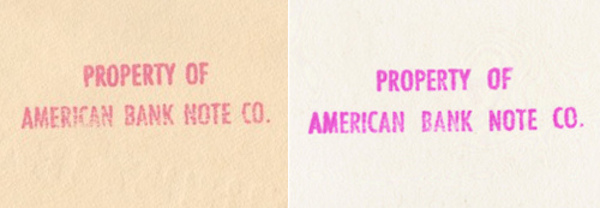
The reddish ABNCo stamp on the back of the Liberty Bank $50, added after the Christies auction by the note’s new owner (left) and the genuine, pinker ABNCo stamp from a different note used when original proofs were in the company’s archives (right).
The older purple stamp seen on original 19th-century proofs was something added by archivists at the ABNCo in the 1970s and 80s to thwart internal theft.
So how rare is this 20th-century proprietary proof?
Looking into the auction records at Archives International, we can see that they sold a similar Liberty Bank note in 2011. There, it was part of a two-note sheet, connected to a $100 bill. The auction listing notes, “We are not certain of the date of printing other then it was no later than the 1980’s but it was possibly printed considerably earlier.”
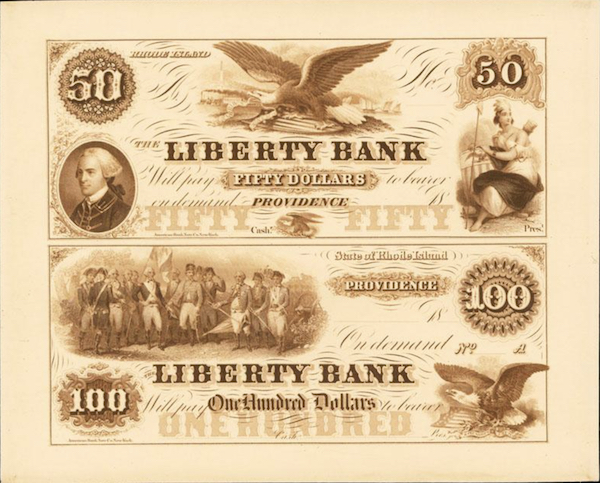
The two-note Liberty Bank sheet as it looked when sold in 2011.
The $50 here was likely cut from that sheet. No other examples of this beige card version have turned up at auction. Small imperfections in both images do line up, but without a higher resolution scan it’s hard to know.
At least one other Liberty Bank $50 proprietary proof is known to exist, as well as a $1 and $100 note, but these are on a bright white card stock.
In addition, there were other Liberty Bank reprints released in the 20th century.
American Express collaborated with the ABNCo and the International Silver Company to release a $100 Liberty Bank note as a commemoration of the Bicentennial in 1976. These notes came as sterling silver plates accompanied by an intaglio paper prints on card stock. They were sold as part of a set of six cases of notes from various states, each featuring a patriotic, Revolutionary-war era theme. Also, Liberty Bank’s $2 note appears on a 1979 SPMC souvenir card, as discussed here.
